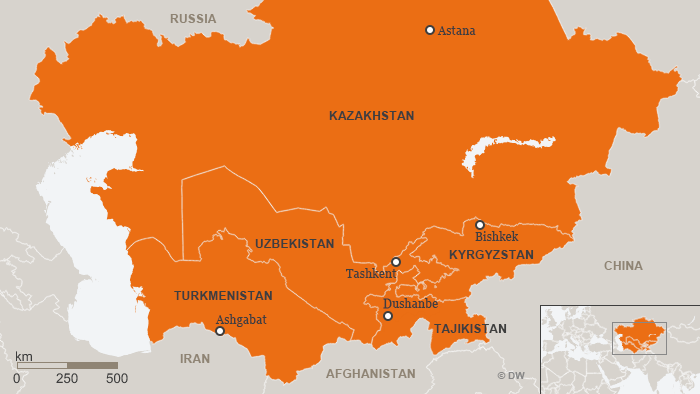On December 2nd, Secretary of the Russian Security Council Nikola Patrushev met with Guo Shenkunem, a high-ranking member of the Politburo of the Central Committee of the Chinese Communist Party, Secretary of the Political and Legal Commission of the CPC Central Committee.
The two spoke of increasing cooperation between Russia and China against terrorism in Central Asia. A threat that has recently been steadily becoming more severe.
According to the Russian intelligence agencies, terrorist presence and activities have recently intensified in northern Afghanistan. These elements are planning to expand into the CIS countries with the help from militants, already in the Central Asian republics. These terrorists are mostly members of ISIS, but also those of the local Afghanistan-Pakistan ISIS affiliate Wilayat Khorasan.
As per the information from the Russian intelligence agencies, there are several thousand such militants.
Earlier, in January 2019, Russia said that unidentified helicopters were deploying large numbers of ISIS militants to the Afghanistan-Tajikistan border.
Russian Interior Minister Igor Zubov said that large-scale provocations were likely being prepared in the area in order to trigger a humanitarian crisis and destabilize the situation near the Russian southern border.
There were numerous reports in 2018, of unidentified helicopters extracting terrorists from various locations in Syria, as well as assisting ISIS members in Afghanistan.
In late April 2019, Russia announced that it was strengthening its bases in Kyrgyzstan and Tajikistan to counter the threat of the militants.
Russia’s Minister of Defense Sergey Shoigu said that following the defeat of ISIS in Syria and Iraq, members of the terrorist group are moving to other regions. The situation is especially complicated in Afghanistan where the US presence has not solved the existing problems.
On April 18th, 2019, Colonel-General Alexander Manilov, chairman of the Coordinating Service of the Council of Commanders of the CIS Border Troops said that approximately 10,000 militants of various terror groups were concentrated on the borders of the former Soviet countries with Afghanistan.
Approximately 6,000 of them arrived in the first months of 2019 alone.
At the same time, internal counter-terrorism activities in Russia are also on-going.
On November 22nd, Russia’s Federal Security Service (FSB) said it detained two ringleaders and seven members of the Hizb ut-Tahrir who are attempting to form a terrorist cell in the country.
“The Federal Security Service, acting in coordination with the Interior Ministry and the National Guard, carried out a special operation in Moscow, the Tatarstan and Tyumen regions, shutting down the activities of two ringleaders and seven members of the Hizb ut-Tahrir al-Islami international terrorist organization,” the statement reads.
“They worked purposefully to create the organization’s clandestine networks in Russia’s regions and resolved the issues of funding of its illegal activities,” the FSB added.
On November 8th, the FSB detained ISIS supporters in the Dagestan region. The arrested individuals had collected at least 10 million rubles ($157,000) for the terrorist group.
“The Federal Security Service in cooperation with the Investigative Committee, the Russian Interior Ministry and the Federal Service for Financial Monitoring have foiled the activity of an underground cell in the Dagestan Region that collected and transferred money for the needs of the international terrorist organization, the Islamic State,” the CPR reported. According to the FSB, “they had amassed at least 10 million rubles.”
In addition to discussing counter-terrorism activities, Patrushev’s meeting was focused on developing a joint mechanism on combating “color revolutions.”
His meeting means that Moscow and Beijing will boost their cooperation in general security. They will exchange information; their intelligence services may likely undertake collective and coordinated actions. In the event of a severe crisis, joint special and military forces may be coordinated and carry out operations together. This is valid for Afghanistan, as well as for the other countries in Central Asia.
Chinese special forces reportedly operate in Syria. In 2017 it was announced that a special forces unit called “the Night Tigers” was operating in the country to combat Uyghur rebels, who are fighting against President Bashar al-Assad’s government and in assistance of ISIS. It is unlikely that their actions were not somehow coordinated with Russia.
MORE ON THE TOPIC:
- ‘Unidentified Helicopters’ Deploying Large Numbers Of ISIS Terrorists To Afghanistan-Tajikistan Border
- “Mysterious Helicopters” Continue To Evacuate ISIS Members From Battlefields Across Middle East
- Russia Is Strengthening Bases In Kyrgyzstan, Tajikistan To Counter Militants Based In Afghanistan: Defense Minister






